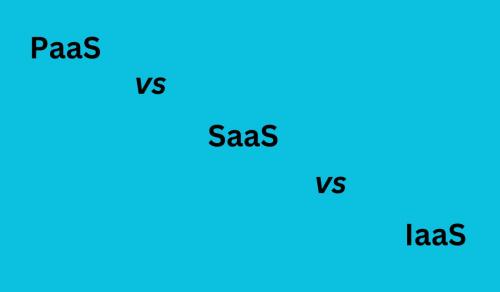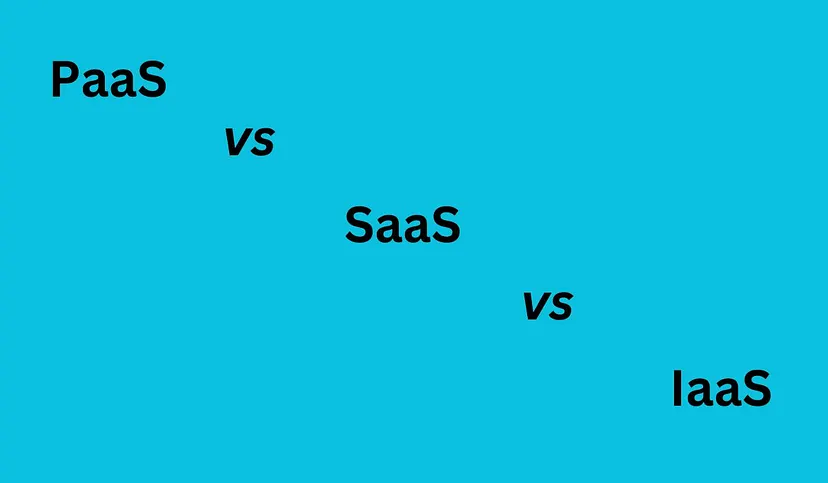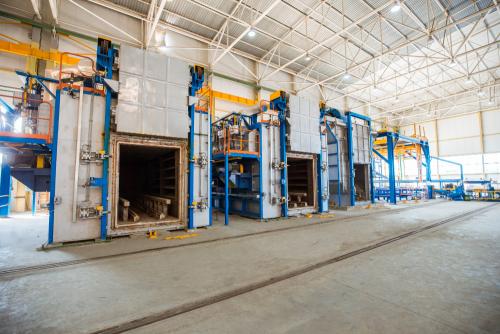Performance and Reliability: PaaS vs SaaS vs IaaS


As businesses increasingly migrate to the cloud,
understanding the performance and reliability of different cloud service models
becomes essential. In this article, we delve into the nuances of Platform as a
Service (PaaS), Software as a Service (SaaS), and Infrastructure as a Service
(IaaS), exploring their respective performance and reliability aspects. This
comparison of PaaS vs SaaS vs IaaS will help businesses make informed decisions
tailored to their needs.
Introduction to Cloud Service Models
Before diving into performance and reliability, it
is crucial to grasp what each service model entails:
- PaaS
(Platform as a Service): PaaS provides a platform allowing customers
to develop, run, and manage applications without the complexity of
building and maintaining the underlying infrastructure. Examples include
Google App Engine and Microsoft Azure.
- SaaS
(Software as a Service): SaaS delivers software applications over the
internet on a subscription basis. Users can access Software directly from
a web browser, eliminating the need for installation and maintenance.
Examples include Salesforce, Microsoft Office 365, and Google Workspace.
- IaaS
(Infrastructure as a Service): IaaS offers virtualized computing resources
over the Internet. It provides essential computing infrastructure like
virtual machines, storage, and networking, allowing businesses to build
and manage their applications. Examples include Amazon Web Services (AWS),
Microsoft Azure, and Google Cloud Platform (GCP).
Performance Analysis: PaaS vs SaaS vs
IaaS
PaaS Performance
PaaS is designed to streamline the development
process. Its performance hinges on the efficiency and capabilities of the
Platform in use. Key performance factors include:
- Development
Speed: PaaS
significantly enhances development speed by providing pre-configured
environments, integrated development tools, and automated deployment
processes. This allows developers to focus on coding rather than
infrastructure management.
- Scalability: PaaS platforms often
come with built-in scalability features. They can automatically adjust
resources based on demand, ensuring applications run smoothly under
varying loads.
- Optimization: PaaS providers
optimize their platforms for specific use cases, improving performance for
applications built within these environments.
However, the performance of PaaS can be constrained
by the Platform's limitations. Platform developers must work within the
confines of the tools and environments provided, which can sometimes restrict
customization and optimization efforts.
SaaS Performance
SaaS offers software applications, meaning
performance is closely tied to the provider's infrastructure and users'
internet connectivity. Key performance factors include:
- Accessibility: SaaS applications are
accessible from anywhere with an internet connection, providing high
availability and ease of use.
- Provider
Efficiency: The
performance of SaaS applications depends on the efficiency and reliability
of the provider's infrastructure. Reputable providers invest heavily in
optimizing their systems for maximum performance.
- Latency
and Connectivity:
Since SaaS relies on internet connectivity, latency issues can affect
performance, especially for users in regions with poor internet
infrastructure.
SaaS applications perform consistently but can
suffer latency issues and reliance on provider infrastructure. Users have
limited control over performance optimizations beyond their network settings.
IaaS Performance
IaaS provides the most control over the
infrastructure, allowing businesses to customize their environments for optimal
performance. Key performance factors include:
- Customization: IaaS offers high
levels of customization, enabling businesses to configure their virtual
machines and storage solutions to meet specific performance requirements.
- Scalability: Like PaaS, IaaS
platforms provide robust scalability options, allowing businesses to scale
resources up or down based on demand.
- Resource
Management:
Performance depends on how well the business manages and allocates
resources. Efficient resource management can lead to significant
performance gains.
IaaS offers the highest degree of flexibility and
control over performance but requires expertise in infrastructure management to
achieve optimal results.
Reliability Analysis: PaaS vs SaaS vs
IaaS
PaaS Reliability
PaaS providers aim to offer highly reliable
platforms with minimal downtime. Reliability factors include:
- Redundancy: PaaS platforms
typically employ redundancy strategies to ensure high availability and
fault tolerance.
- Managed
Services: PaaS
providers handle infrastructure management, including updates and security
patches, ensuring a reliable application development and deployment
environment.
- SLA
(Service Level Agreement): PaaS providers usually offer SLAs that
guarantee a certain level of uptime, contributing to overall reliability.
While PaaS platforms are generally reliable but
subject to provider-specific issues and outages, businesses must rely on the
provider's ability to maintain uptime and quickly resolve issues.
SaaS Reliability
SaaS applications are designed to be highly
reliable and accessible. Reliability factors include:
- High
Availability: SaaS
providers often operate multiple data centers across various locations,
ensuring high availability and disaster recovery capabilities.
- Automatic
Updates:
Providers manage all updates and maintenance, reducing downtime and
ensuring users can always access the latest features.
- SLAs: Like PaaS, SaaS
providers offer SLAs with uptime guarantees, enhancing reliability.
SaaS applications benefit from the provider's
infrastructure investments and expertise. However, users must trust the
provider to maintain high-reliability levels and handle disruptions
effectively.
IaaS Reliability
IaaS offers robust reliability features, but much
depends on how businesses manage their infrastructure. Reliability factors
include:
- Control
and Flexibility:
Businesses have complete control over their environments, allowing for
customized redundancy and disaster recovery strategies.
- SLAs: IaaS providers offer
uptime guarantees, but the reliability can vary based on how well the
business configures and manages its resources.
- Backup
and Recovery:
Effective backup and recovery strategies are essential for maintaining
reliability in IaaS environments.
IaaS provides the tools for high reliability but
requires businesses to actively manage and optimize their infrastructure to
achieve desired reliability levels.
Conclusion
In comparing PaaS vs SaaS vs IaaS, performance and
reliability are crucial factors that can significantly impact a business's
operations.
- PaaS offers
streamlined development and automatic scalability but can be limited by
platform constraints.
- SaaS provides easy use
and high availability but relies heavily on the provider's infrastructure
and internet connectivity.
- IaaS delivers
unmatched control and customization, requiring businesses to manage their
infrastructure effectively to achieve optimal performance and reliability.
Choosing the right cloud service model depends on
specific business needs, technical expertise, and performance and reliability
requirements. Businesses can make informed decisions that align with their
strategic goals by understanding the strengths and limitations of PaaS, SaaS,
and IaaS.










Comments